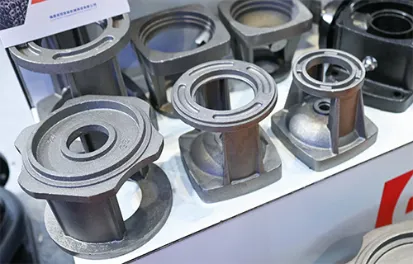Mobile:+86-311-808-126-83
Email:info@ydcastings.com
Optimizing the Performance of 4G63 Turbo Manifolds for Enhanced Power and Efficiency
The 4G63 Turbo Manifold Enhancing Performance through Precision Engineering
The 4G63 engine, renowned for its robust performance and tuneability, has long been a favorite among automotive enthusiasts, particularly in the world of turbocharged applications. Central to maximizing the potential of any turbo system is the turbo manifold, a critical component that directly influences engine performance, efficiency, and responsiveness.
Understanding the 4G63 Engine
The 4G63 is a 2.0-liter inline-four engine produced by Mitsubishi, predominantly used in various models including the Mitsubishi Eclipse, Eagle Talon, and Mitsubishi Galant VR4. This powerful engine features a DOHC design with a turbocharger, making it an ideal candidate for performance upgrades. In stock form, the 4G63 generates respectable power, but the potential for modification is where enthusiasts find the true allure.
The Role of the Turbo Manifold
The turbo manifold serves as the connection between the engine's exhaust ports and the turbocharger. Its primary function is to collect exhaust gases from the engine and direct them efficiently into the turbocharger. The design and construction of the turbo manifold can significantly impact the engine's performance characteristics, affecting boost response, power output, and overall efficiency.
A well-designed manifold will minimize restrictions in exhaust flow, allow for quicker spool times of the turbocharger, and enhance the engine's ability to rev freely. Conversely, a poorly designed or restrictive manifold can lead to increased turbo lag, reduced power output, and a less enjoyable driving experience.
Materials and Construction
4g63 turbo manifold

When it comes to materials, turbo manifolds for the 4G63 engine can be crafted from cast iron, stainless steel, or mild steel, each having its unique advantages and drawbacks. Cast iron manifolds are durable and heat-retentive, although they are generally heavier. Stainless steel manifolds are lighter and more resistant to corrosion, providing an excellent balance of durability and performance. Mild steel, while less expensive, might require additional care to prevent rust and deterioration over time.
The construction technique is also crucial; weld quality and joint design can affect the manifold’s lifespan and performance. For instance, a manifold with smooth transitions and well-placed merge collectors can enhance exhaust flow and contribute to better turbo efficiency.
Design Considerations
When selecting or designing a turbo manifold for the 4G63, several factors must be taken into account. The manifold's runner length and diameter can impact boost responsiveness and power delivery. Shorter runners may provide quicker spool times but can sacrifice low-end torque, while longer runners can improve torque at lower RPMs but may slow turbo response.
Another critical consideration is the manifold layout. In a traditional log-style manifold, all runners merge into a single outlet, which can promote even flow but may lead to turbulence. A tubular manifold, however, utilizes individual runners to direct exhaust gases more freely, often yielding better overall performance.
Conclusion
The turbo manifold is a pivotal component in unlocking the full potential of the 4G63 engine. Whether through optimizing materials, enhancing design, or considering the specifics of exhaust flow dynamics, the right manifold can make a significant difference to turbocharged performance. With proper selection and tuning, enthusiasts can transform their 4G63 powered vehicles into high-performing machines, ready to tackle both the streets and the track with power and precision. The world of turbocharging continues to grow, and with it, the legacy of the 4G63 engine remains impactful, driven by the passion of performance-minded individuals.
-
Why Should You Invest in Superior Pump Castings for Your Equipment?NewsJun.09,2025
-
Unlock Performance Potential with Stainless Impellers and Aluminum End CapsNewsJun.09,2025
-
Revolutionize Your Machinery with Superior Cast Iron and Aluminum ComponentsNewsJun.09,2025
-
Revolutionize Fluid Dynamics with Premium Pump ComponentsNewsJun.09,2025
-
Optimizing Industrial Systems with Essential Valve ComponentsNewsJun.09,2025
-
Elevate Grid Efficiency with High-Precision Power CastingsNewsJun.09,2025











